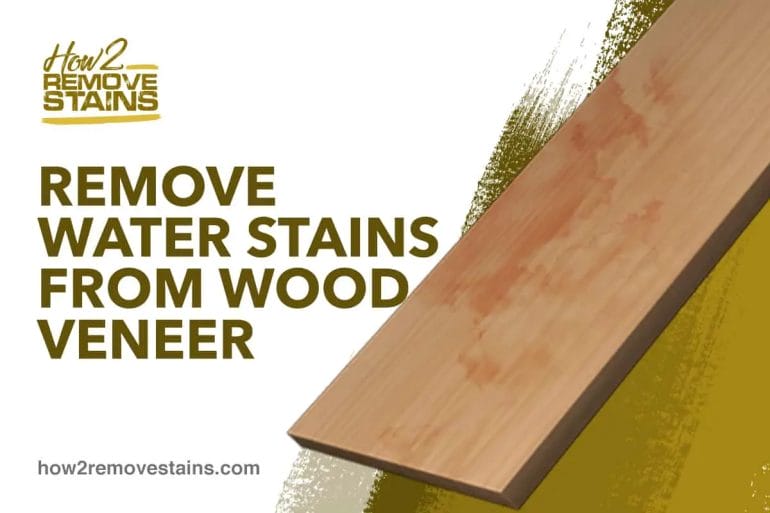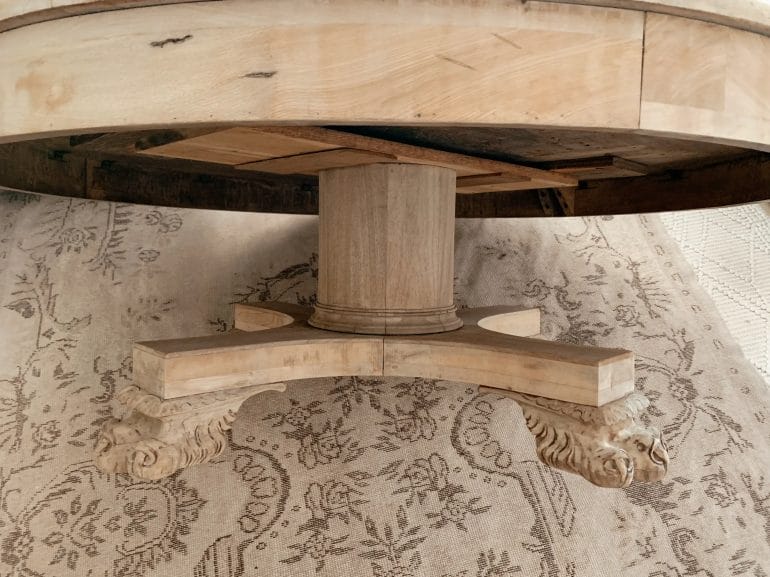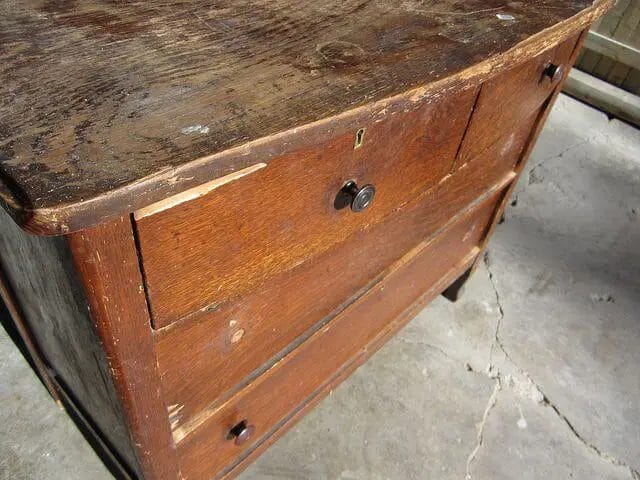Removing wood veneer can be a daunting task, but with the right techniques, it can be done effectively and efficiently. Whether you want to remove old veneer to restore a piece of furniture or replace it with a new one, there are several methods you can try. From using heat and moisture to scraping and sanding, you can find a method that suits your needs and the condition of the veneer. This article will guide you through the step-by-step process of removing wood veneer with ease.

Step-by-Step Guide for Removing Wood Veneer
Wood veneer is a thin layer of wood that is often applied to furniture or other wooden surfaces to give it an attractive appearance. Over time, however, the veneer may become damaged or begin to peel off. If you find yourself in this situation and need to remove the wood veneer, follow this step-by-step guide to ensure a successful removal process.

1. Gather the necessary tools
Before you begin the removal process, gather all the necessary tools. This may include a putty knife, a heat gun, a scraper, sandpaper, and a damp cloth. Having all the tools on hand will make the process smoother and more efficient.
2. Assess the condition of the veneer
Examine the condition of the veneer to determine the best approach for removal. If the veneer is already loose or peeling, you may be able to skip some of the following steps and proceed directly to removing it. However, if the veneer is still firmly attached, you will need to use heat or other methods to loosen the adhesive.
3. Apply heat to the veneer
Using a heat gun, apply heat to the veneer in small sections. The heat will help to soften the adhesive and make it easier to remove the veneer. Be cautious not to apply too much heat, as this could damage the underlying wood. Use a putty knife to gently lift the softened veneer.
4. Scrape off the veneer
Once the adhesive has been loosened, use a putty knife or a scraper to carefully scrape off the veneer. Work in small sections, applying gentle pressure to avoid damaging the wood underneath. If necessary, continue to apply heat to stubborn areas to further soften the adhesive.
5. Remove any remaining adhesive
After the veneer has been removed, there may still be adhesive residue left on the wood surface. Use a scraper or sandpaper to gently remove any remaining adhesive. Be careful not to apply too much pressure or damage the wood.
6. Clean the surface
Once all the veneer and adhesive residue has been removed, clean the wood surface using a damp cloth. This will help to remove any dust or debris and prepare the surface for further treatment or refinishing.
7. Evaluate the wood surface
After the removal process is complete, carefully assess the condition of the wood surface. If there are any areas that have been damaged during the removal process, you may need to make necessary repairs or consider refinishing the entire surface.
8. Consider refinishing options
If you decide to refinish the wood surface, consider the various options available. This may include staining, painting, or applying a new layer of veneer. Choose a method that best suits your desired outcome and skill level.
9. Apply the chosen finish
Follow the manufacturer’s instructions to apply the chosen finish to the wood surface. Take your time and ensure an even and smooth application for the best results. Allow the finish to dry completely before using or placing any objects on the surface.
10. Maintain the wood surface
Once the refinishing process is complete, it is important to properly maintain the wood surface to ensure its longevity. Regular cleaning and periodic inspections will help to prevent any future issues and keep the surface looking its best.
In summary, removing wood veneer can be a labor-intensive process, but with the right tools and techniques, it can be done successfully. Take your time, be patient, and follow each step carefully to achieve the desired outcome. Whether you choose to refinish the surface or leave it bare, the end result will be a refreshed wood surface ready to be enjoyed for years to come.

Essential Tools and Techniques for Removing Wood Veneer
Removing wood veneer can be a challenging task, especially if you don’t have the right tools and techniques. Whether you want to refinish a piece of furniture or replace the veneer altogether, it’s important to approach the process with care to avoid damaging the wood surface. In this section, we will discuss some essential tools and techniques that will make the process of removing wood veneer easier and more effective.
Tools for Removing Wood Veneer
Before you begin the process of removing wood veneer, it’s important to gather the necessary tools. Here are some essential tools that will help you get the job done:
- Utility knife or scraper: A sharp utility knife or scraper will come in handy for scoring and lifting the veneer.
- Heat gun or iron: Applying heat to the veneer will help loosen the adhesive, making it easier to remove.
- Putty knife or chisel: Use a putty knife or chisel to gently pry up the veneer once it has been scored and heated.
- Sandpaper or sanding block: After removing the veneer, sanding the surface will help prepare it for refinishing or applying new veneer.
- Gloves and safety goggles: It’s important to protect your hands and eyes during the veneer removal process.
Techniques for Removing Wood Veneer
Once you have gathered the necessary tools, it’s time to start removing the wood veneer. Here are some techniques that you can use:
- Score the veneer: Use a utility knife or scraper to score the surface of the veneer. This will create small cuts and allow the adhesive to penetrate.
- Apply heat: Use a heat gun or iron to apply heat to the scored veneer. The heat will help loosen the adhesive, making it easier to lift the veneer.
- Lift the veneer: Use a putty knife or chisel to gently pry up the veneer. Start at one edge and work your way across, lifting the veneer as you go.
- Remove any remaining adhesive: Once the veneer has been lifted, you may find that there is still adhesive residue on the wood surface. Use a scraper or sandpaper to remove any remaining adhesive.
- Sand the surface: After removing the veneer and adhesive, sand the surface of the wood to smooth out any imperfections and prepare it for refinishing or applying new veneer.
It’s important to note that the specific techniques and tools you use may vary depending on the type and condition of the wood veneer. It’s always a good idea to test the method on a small, inconspicuous area before moving on to the entire surface.
In summary, removing wood veneer requires the right tools and techniques. By using a utility knife or scraper to score the veneer, applying heat to loosen the adhesive, and gently lifting the veneer with a putty knife or chisel, you can successfully remove the veneer without damaging the wood surface. Remember to protect yourself with gloves and safety goggles, and to sand the surface afterward for a smooth finish. With these essential tools and techniques, you’ll be able to tackle any wood veneer removal project with confidence.

Expert Tips for Safely Removing Wood Veneer
If you have a piece of furniture or any other wood surface with damaged or outdated wood veneer, you may be considering removing it to reveal the natural wood underneath. However, removing wood veneer can be a delicate process that requires careful attention to avoid damaging the surface. In this section, we will provide you with expert tips on how to safely remove wood veneer without causing any harm.
Gather the Necessary Tools
Before you begin the veneer removal process, it is important to gather all the necessary tools to ensure a smooth and efficient task. Here are the tools you will need:
- Heat gun or clothes iron
- Utility knife or razor blade
- Putty knife or scraper
- Sandpaper or sanding block
- Wood glue or adhesive remover
Prepare the Surface
Before starting the veneer removal, it is essential to prepare the surface properly. This involves cleaning the surface and removing any dirt or debris. You can use a mild detergent and water solution to clean the area. Once cleaned, let the surface dry completely.
Apply Heat
The first step in removing wood veneer is to soften the adhesive underneath using heat. You can do this by using a heat gun or a clothes iron. Set the heat gun or iron to a medium heat setting and apply it to the veneer surface in a sweeping motion. Be cautious not to overheat the veneer or the wood underneath.
Peel Off the Veneer
After applying heat, the adhesive should soften, making it easier to peel off the veneer. Use a utility knife or razor blade to lift the edges of the veneer carefully. Gently peel off the veneer using your hands or a putty knife. Work slowly and avoid applying too much pressure to prevent any damage to the underlying wood.
Remove Residual Adhesive
Once the veneer is removed, there may be residual adhesive left on the wood surface. To remove this, you can use a putty knife or scraper to scrape off as much adhesive as possible. If the adhesive proves stubborn, you can apply an adhesive remover or wood glue to dissolve and loosen the remaining adhesive. Wipe away the adhesive using a clean cloth or paper towel.
Sand and Refinish
After removing the veneer and adhesive, you may notice some unevenness or minor damage to the wood surface. To restore the surface to its original condition, lightly sand the area using sandpaper or a sanding block. Sand in the direction of the grain to avoid leaving visible marks. Once sanded, you can apply a new finish or stain to match the rest of the wood.
Summary
Removing wood veneer can be a rewarding process that allows you to revive old or damaged wood surfaces. By following these expert tips, you can safely remove wood veneer without causing any harm. Remember to gather the necessary tools, prepare the surface, apply heat to soften the adhesive, carefully peel off the veneer, remove residual adhesive, and finally sand and refinish the wood surface. With patience and attention to detail, you can achieve beautiful results and transform your wood furniture or surfaces.
Common Mistakes to Avoid When Removing Wood Veneer
Wood veneer removal can be a challenging task, especially if you are not familiar with the proper techniques and tools to use. It requires careful attention to detail and a delicate touch to avoid damaging the underlying wood surface. In this section, we will discuss some common mistakes to avoid when removing wood veneer.
1. Using excessive force
One of the most common mistakes people make when removing wood veneer is using excessive force. It can be tempting to use a lot of pressure to quickly peel off the veneer, but this can cause damage to the wood underneath. Instead, apply gentle pressure and use a scraper or putty knife to slowly lift the veneer without causing any harm.
2. Not using the right tools
Another mistake to avoid is not using the right tools for the job. Removing wood veneer requires specific tools such as a scraper, putty knife, heat gun, and adhesive solvent. Using improper tools can make the process more difficult and increase the risk of damaging the wood. Make sure to invest in the right tools or consider hiring a professional if you are unsure.
3. Rushing the process
Patience is key when it comes to removing wood veneer. Rushing the process can lead to mistakes and damage. Take your time to carefully peel off each layer of veneer, ensuring that you are not causing any harm to the wood underneath. It may be a time-consuming task, but it is worth it to preserve the quality and integrity of the wood.
4. Neglecting to protect the wood
When removing wood veneer, it is important to take steps to protect the underlying wood surface. Before starting the removal process, apply a protective layer of masking tape or plastic wrap to prevent any accidental scratches or dents. Additionally, be cautious when using heat to soften the adhesive, as excessive heat can damage the wood. Use a heat gun on a low setting and keep it moving to avoid scorching the surface.
5. Failing to clean the surface properly
After removing the wood veneer, it is essential to thoroughly clean the surface to remove any adhesive residue or debris. Failure to do so can affect the adhesion of any new veneer or finish you plan to apply. Use a solvent or adhesive remover recommended for your specific type of wood to clean the surface effectively.
In summary, removing wood veneer requires precision and care to avoid damaging the underlying wood. By avoiding these common mistakes, you can ensure a successful veneer removal process and preserve the quality of your wood surface.
FAQs
How do I remove wood veneer?
To remove wood veneer, you can use a heat gun or an iron to soften the adhesive. Then, gently peel off the veneer using a putty knife or a scraper. Take care not to damage the underlying surface, and work slowly and patiently to ensure a clean removal.
What tools do I need to remove wood veneer?
You will need a heat gun or an iron, a putty knife or a scraper, and a cloth or sponge for cleaning up the residue. It’s also helpful to have a pair of gloves and safety goggles to protect yourself during the removal process.
Can I reuse wood veneer after removing it?
While it is possible to reuse wood veneer, it requires careful handling and removal to avoid damaging the veneer. If the veneer is in good condition after removal, you can clean it up and use it for another project. However, keep in mind that reusing veneer may not always yield satisfactory results, so it’s best to assess its condition before deciding to reuse it.
Conclusion
In conclusion, removing wood veneer can be a challenging task, but with the right tools and techniques, it is certainly achievable. By following the steps outlined in this guide, you can effectively remove wood veneer and restore your furniture or surfaces to their original state. Remember to proceed with caution and take your time to prevent any damage. Whether you are opting for chemical stripping, heat treatment, or a combination of methods, always prioritize safety and wear appropriate protective gear. With patience and careful effort, you can successfully remove wood veneer and transform your space.